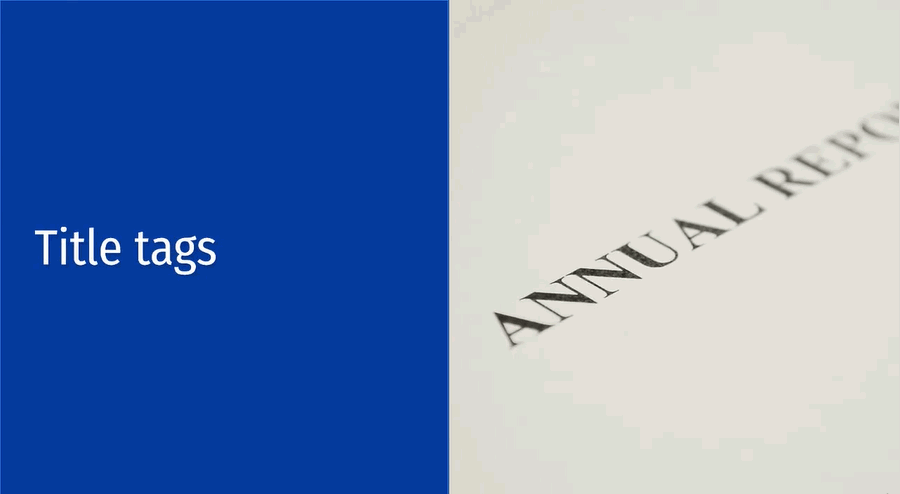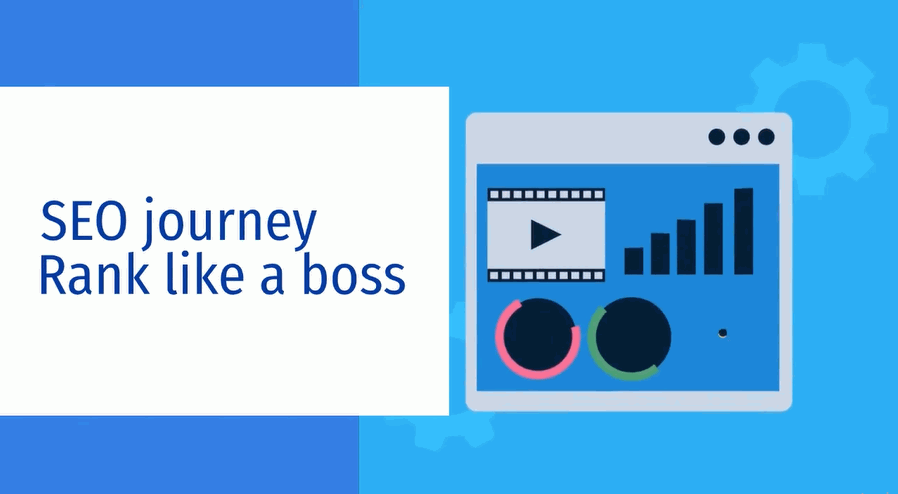Many people are intimidated by the idea of SEO. They see it as a complicated, mysterious process only experts can do. However, this couldn’t be further from the truth! You can take many easy steps to start your SEO journey and rank like a boss! This blog post will discuss how to get started with SEO so you can rank higher in Google search results for your industry keywords.
Introduction:
SEO is a vast and complex topic, but we will focus on the simplest things you can do today to help you rank higher in Google’s organic search results.
One of the most important things to understand about SEO is that it’s all about providing value to your audience. When you provide valuable content, people will want to share it with their friends and followers, which will help increase your website’s exposure.

To rank higher in Google, you must ensure your website is fully optimized for search engines. It includes optimizing your website’s title tags, meta descriptions, header tags, images, and other elements influencing your ranking.
You can also improve your SEO by using keywords in your content and backlinking to high-quality websites from your website.
If you’re ready to start ranking higher in Google, follow these simple steps:
Optimize your website’s title tags and meta descriptions.
Keywords and phrases are used to identify a website’s content and help search engines find it more easily. You can help search engines; your audience sees and understands your content more efficiently by optimizing your title tags and meta descriptions.
Title tags:

Title tags should include keywords that describe the page’s contents, but only a few keywords that interfere with each other or confuse readers. For standard, “How to Optimize Title Tags” contains too many keywords in one tag.
Page titles:

Page titles should be descriptive while providing insight into what might be on the page without giving away all of its secrets. For example, “Title Tag Optimization: How To Rank Higher In Google” is descriptive but doesn’t give away all of the content on the page.
Meta descriptions:

Meta descriptions are snippets that provide an overview of your website’s contents or where they can be found. They should use keywords, but in a way, that’s not spammy and makes sense for both search engines and readers. For example, “SEO techniques and strategy used to rank your website” is descriptive but not spammy.
Include keywords in your content.

You should include keywords in your content to help search engines understand the topic of your pages. Generally, for websites with a blog or other type of published content, you should optimize about 3-5 posts per page to fill the first three results on Google. For websites without blogs, like retail websites, it’s recommended to optimize 20-30% of your product descriptions. The keyword density should be natural and not too high.
Backlink to high-quality websites from your own website.
One of the best ways to improve your SEO is by backlinking to high-quality websites from your website. When you link to authoritative websites, it tells search engines that your website is trustworthy and credible. It will help increase your website’s ranking in search engine results pages.

There are many ways to backlink to other websites, but the most effective way is to include links within your content. You can have a link by mentioning the other website’s name or URL in your text or by adding an image that contains a link to the other website.
If you’re ready to start improving your SEO, backlink to some of these high-quality websites:
- Google.com
- Wikipedia.org
- WordStream.com
- Moz.com
- HubSpot.com
- SearchEngineLand.com
- SEOmoz.org
Optimize your website’s images.
Images are a valuable part of SEO because they can help improve your website’s ranking in search engine results pages and increase traffic to your website from image search results.

Optimize your page load speed with a CDN or by optimizing images and reducing file sizes to improve user experience, which will also help your SEO efforts. Using an image that is too large can slow down the time it takes for content on your website to load up in search engine results pages, which might cause Googlebot to move on to another result before your website loads up. If you’re using an image that is too large, try editing the image’s dimensions and file size until it looks right on different screen sizes.
Optimize images:
Images should be relevant to their web pages and include keywords where appropriate (for example, in alt tags).
Use high-quality images.
Images should be high quality, and the file size should be as small as possible without compromising image quality.
We should optimize the dimensions of an image for different screen sizes.
Include captions with your images.
Captions provide additional information about an image and can help improve SEO.
Caption text should include relevant keywords and use natural language.

When optimizing your website’s images, finding a balance between file size and image quality that works for you is vital. You might even need to experiment with different sizes and formats (like .jpg vs. .png) until you find what looks best on different screen sizes.
Monitor your website’s rank and traffic using Google Analytics.
Google Analytics allows you to track the number of visitors on your site, where they are coming from (geographically), how long they spend there, what pages/items maintain their attention longest etc. It also tells you if people unsubscribed or subscribed to email lists and more advanced statistics like bounce rates which help identify low-value content that needs replacing with something better suited towards engaging readers.

Other features include tracking events such as adding products in a shopping cart but not checking out; this can help identify areas where improvements need making. However, it may indicate that shoppers don’t want the item after all rather than having found faults with checkout, so complete abandonment should always be considered the last resort. Google Analytics allows you to track your website’s ranking and traffic to find out what works best to increase both. It is crucial when running a business online where revenue is directly linked with how well-received your content is by search engine algorithms.
When it comes to improving SEO efforts on websites, there is no one-size-fits-all solution. What works for one website might not work for another, and vice versa. The best way to find out what’s working (and isn’t) is to track your website’s rank and traffic using Google Analytics. It will help you identify the techniques and strategies that are helping boost your website’s SEO efforts.
Keep publishing valuable content that helps solve people’s problems.
The key to increasing your website’s SEO efforts is publishing valuable content that solves people’s problems. This content must be well-written, informative, and engaging to keep people coming back for more. Your website’s SEO ranking will improve if you can do this consistently.

SEO is all about publishing valuable content that helps solve people’s problems. Your website’s SEO ranking will improve if you can do this consistently. It’s essential to track your website’s rank and traffic using Google Analytics to increase your website’s SEO efforts. It will help you identify the techniques and strategies that are helping boost your SEO efforts. Keep valuable publishing content while optimizing images until they look right on different screen sizes; this will ensure you strike a balance between file size and image quality without compromising either.
Conclusion
If you follow these simple steps, you will see a noticeable increase in your website’s ranking and traffic. SEO doesn’t have to be complicated – focus on providing value to your audience and following the basic principles of SEO. Good luck!
SEO is about providing value to your audience – if you can do that, you’re well on your way to ranking higher in Google!

